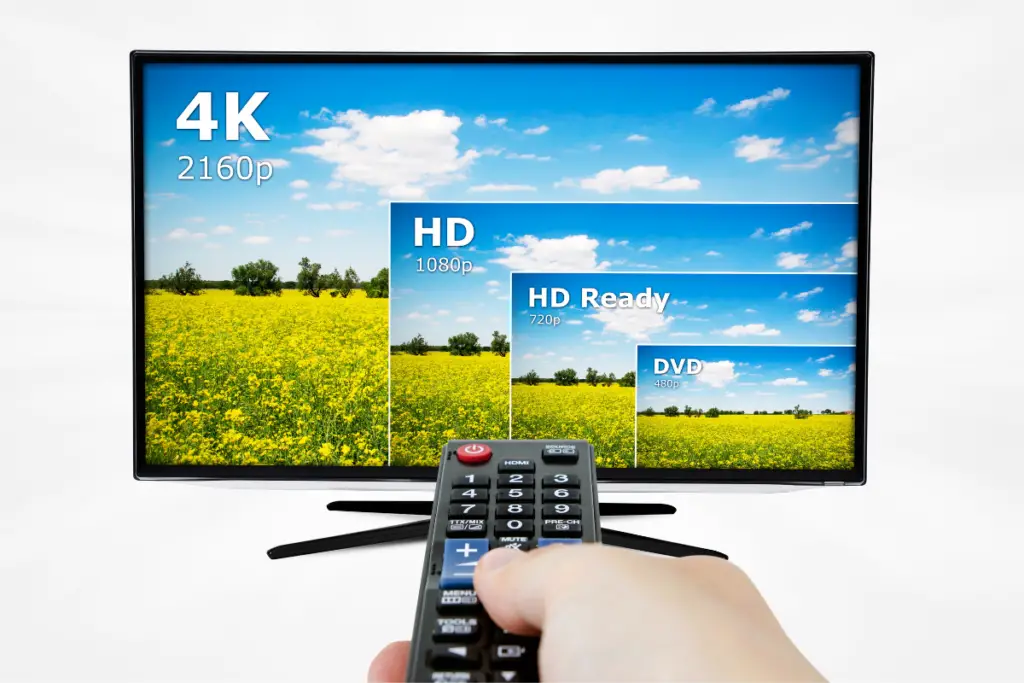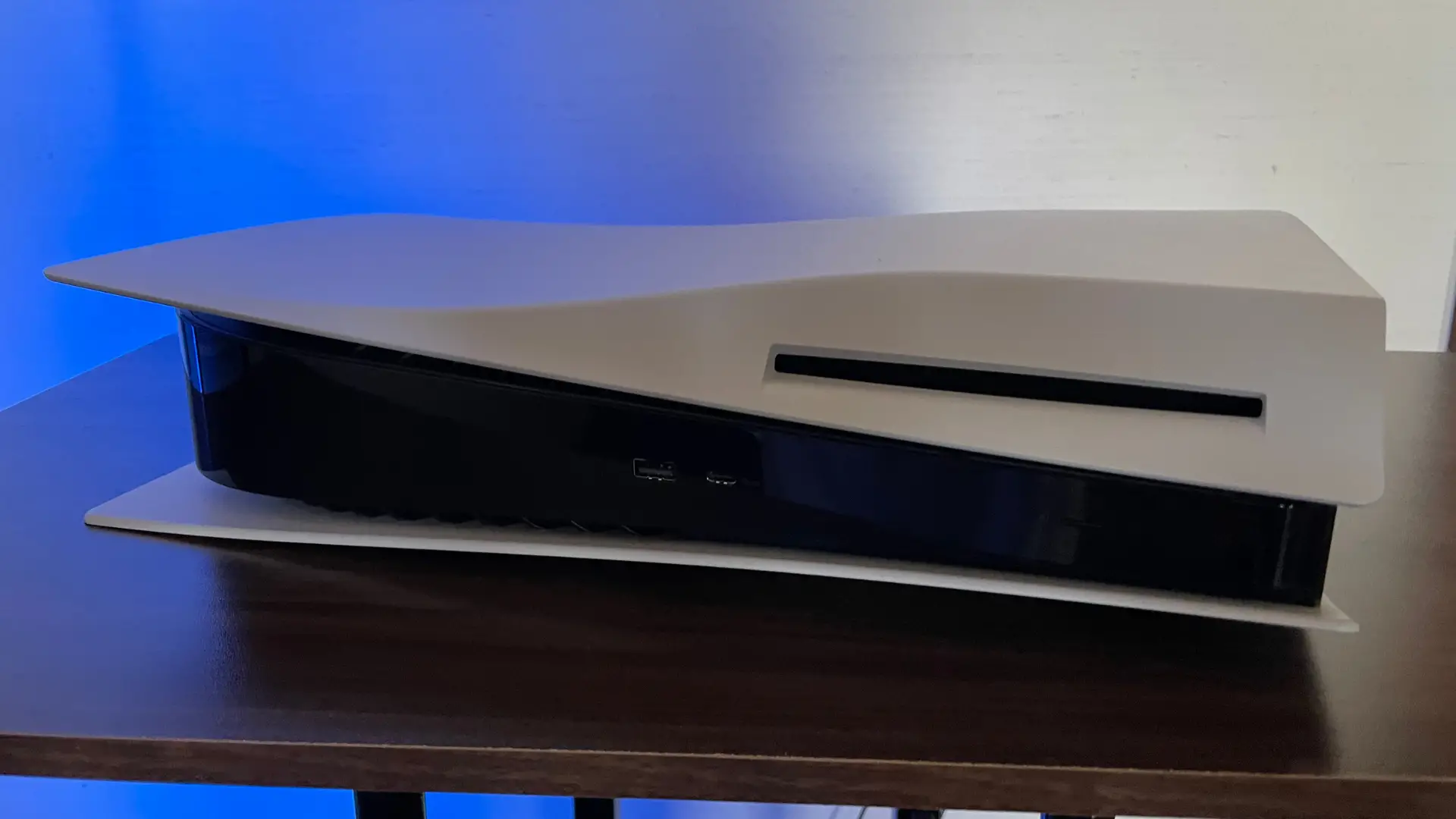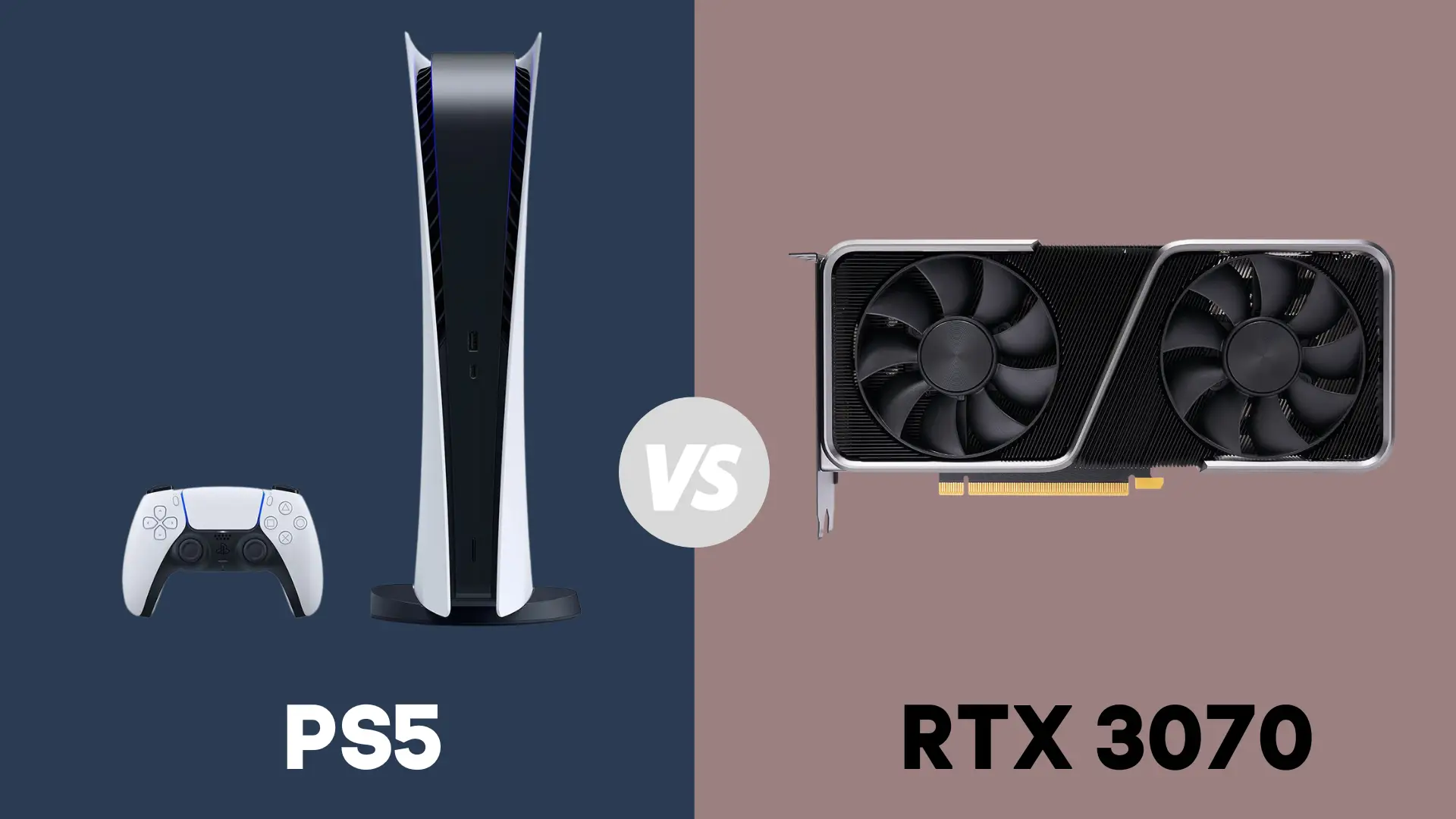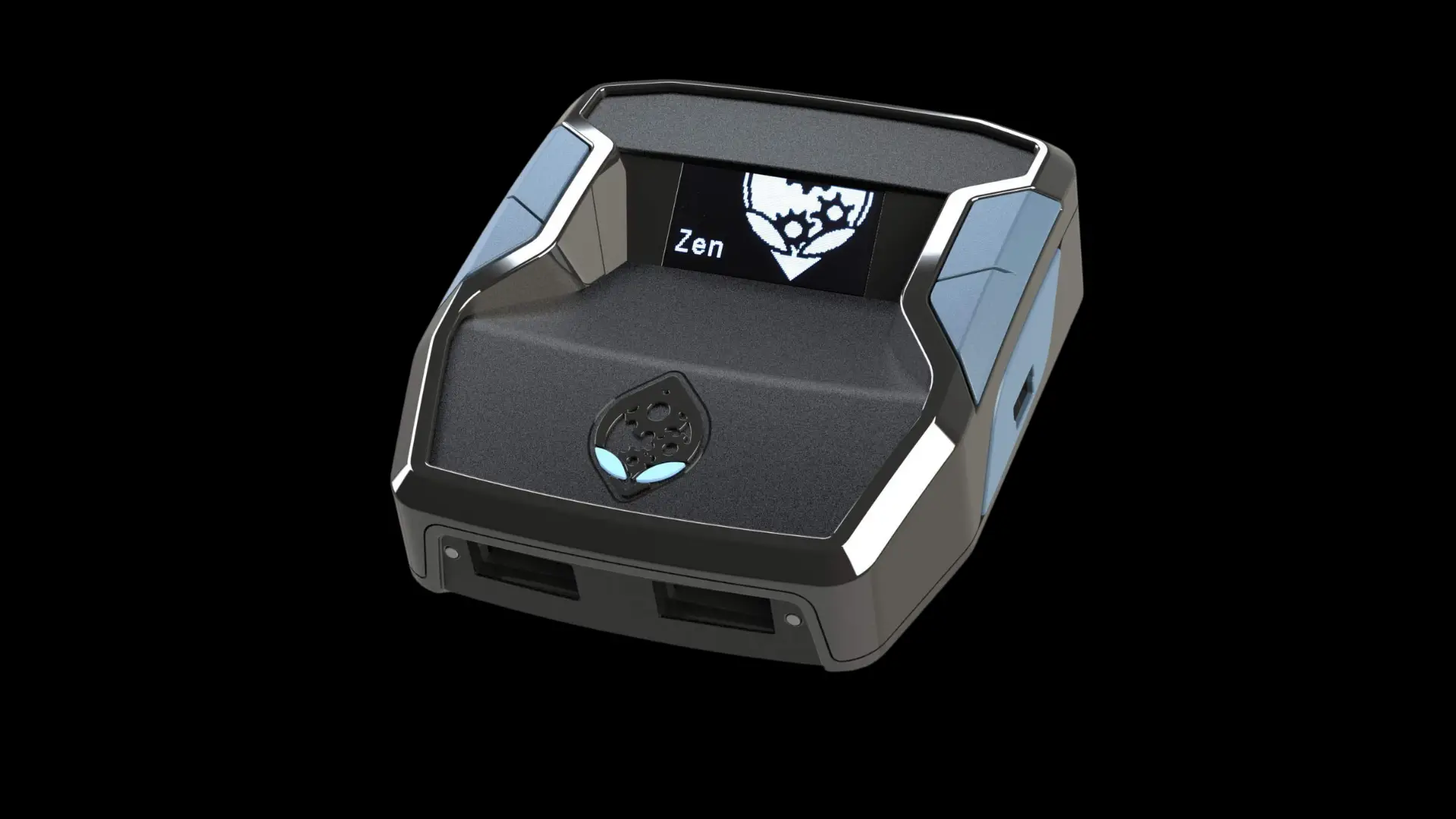1280×720 vs 1920×1080 Resolution (Differences and Comparisons)

Whether you’re in the market for a new TV or you’re simply curious about the differences these numbers make, it’s easy to see why many people may be confused about the comparisons of the resolutions 1280×720 and 1920×1080.
While the difference in prices may not be significant, the clarity and sharpness of images in both these screens can make or break your experience with your TV. So, what are the differences and comparisons between 1280×720 and 1920×1080?
In a nutshell, the largest difference in these resolutions is the number of pixels on the screen. Higher pixeled resolutions often create sharper and clearer images, allowing you to enjoy your movies or games to their fullest. In the 1280×720 screen, you’ll see up to 821,600 pixels, while the 1920×1090 resolution boasts over 2,073,600 pixels. That’s more than twice the clarity.
However, unless you have been doing a wide array of researches and compared these resolutions side by side, it could be difficult to truly see the differences it makes. You’ll also have to be highly sensitive to the clarity levels of the screen to find the best comparison. But if that’s the case, why should people pick one over the other?
In this article, we’ll dive deeper and clearer on how these two resolutions match up against each other, so you can make the better choice for your needs.
What is 1280×720 resolution?
To start, let us look at what is 1280×720 resolution. In the past, 1280×720 was known as the highest quality resolution for most TV screens. This also resulted in 720p TVs that are also known as HDTVs or high definition TV.
Simply put, the definition of 1280×720 means you’ll see 1280 vertical lines and 720 horizontal lines to make up a single image on the screen. This works great for smaller screens, as the 821,600 pixels can make up for a clearer image without being overstretched.
The “p” that you see in the 720p HDTV resolution simply means it has progressive scanning. In layman’s terms, it simply means your images will be updated quicker.
In comparison, older TVs before the era of 1280×720 resolution often offered larger screens with lesser pixels. This creates a disconnection in the images we see, hence also known as pixelated images. It is akin to seeing images that have been censored or blurred out, although not on purpose.
Because the 1280×720 resolution is a standard for high definition content, it’s the easiest way for you to enjoy seamless images without breaking your bank. This helps content creators to dish out high-quality content without having to invest in expensive computers for video rendering.
Unfortunately, screens with 1280×720 resolution have their downsides too. One of the most recognizable cons to such a screen is that you won’t be able to enjoy high-quality videos that you may get from Blu-Ray discs. This is as there is a cap to the quality that 720p resolution TVs can handle.
With the rise of better-quality screens, it’s also becoming increasingly difficult to find TVs with 1280×720 resolution today. While 1280×720 may have been the standard for high-quality TVs in the past, the fast-paced world of technology may be quick to drive a new generation of HDTVs to higher demands.
What is 1920×1080 resolution?
Speaking of higher-quality HDTVs, there are the 1920×1080 resolution screens. To start, it may be a good idea to first know that there are two types of 1920×1080 screens in the market today. They are known as the 1080i and 1080p resolutions. As we’ve mentioned, the “p” in the resolution stands for progressive scanning for quicker image loading.
Alternatively, the “i” in the 1080i resolution means interlaced scanning, allowing the screen to use alternate screen lines. Following the rise and fall of 720p TVs as the high definition TV, 1080i screens were then regarded as the next generation HDTV. It combines two frames interlaced into a single image, providing you a clear image – although not as great as those of 1080p.
To best enjoy content via 1920×1080 screens, you’ll need a large screen that can provide you the best image clarity. For smaller homes, this could mean having to face space constraints to fit in a large TV.
Unfortunately, owning a screen with a 1920×1080 resolution also means you may have to seek out contents that can match the quality of your screen. Content creators may then have to invest in more expensive computers, cameras, and other equipment to create such high-quality content.
On the plus side, however, owning a 1920×1080 resolution screen today would mean that you are ready for what the future of entertainment brings. From Blu-Ray discs to top quality films and gaming consoles, there’s almost nothing that can come in the way of 1080p resolution screens.
As more contents are moving toward realistically high-quality entertainment, the best way to enjoy them is by kicking your feet up with a large screen TV that boasts a 1920×1080 resolution.
Do note that while high-quality 1080p TVs may come with a steep price, the quality you get is almost second-to-none when it comes to the entertainment industry. As such, many people may see it as a great investment to have to future-proof their homes with entertainment.
Comparing 1280×720 and 1920×1080:
Now that you’re aware of how the two resolutions differ from each other, a good way to find out which resolution fits you best is to compare them side by side. Below, you’ll find some of the differences and comparisons between the 1280×720 and 1920×1080.
Image quality
As we’ve mentioned, the picture quality of your screen relies heavily on the number of small pixels that fill your screen. In the 1280×720 screen, it features up to 821,600 pixels while the 1920×1080 screen features 2,073,600 pixels. At a glance, it’s easy to see that the 1920×1080 screen has better image quality out of the box.
While this may be the case in pixel comparison, the size of your screen could also play a part in which screen resolution is best for you. If you’re considering buying a small 32″ screen, then the 1280×720 screen should provide you with more than enough pixels for a clear screen on a budget.
On the flip side, if you’re considering investing in a 50” and above sized TV, then you’ll want to consider a screen with 1920×1080 resolution to experience quality entertainment from home.
When it comes to picking out a large 1920×1080 TV, however, you may want to consider investing in a screen with a 1080p resolution instead of a 1080i resolution. This is as the pixels are not interlaced in the former, resulting in an image that is crispier and clearer.
Type of content available
Although screens with 1920×1080 resolution can typically broadcast content that is of higher quality and is clearer, the same cannot be said with the type of content available in the entertainment industry today.
Typically, most content houses and small-scale content creators today may have generic equipment and computers to create quality content to their best efforts. As such, most contents should fit well for TVs with 1280×720 resolution or with 1080i TVs.
If you have a TV with a 1080p resolution, it could be more difficult to source content that can match the quality of your TV. This causes a mismatch of content to quality, which can hinder your experience of watching TV on the high definition 1080p screen.
In fact, if you’re considering purchasing a TV mainly for YouTube streaming, then a TV with 1280×720 or 1080i resolution should be sufficient. While more content hubs are now working toward a generation with clearer images to accommodate 1080p resolution, contents that work well with 720p resolution don’t seem to be leaving the industry anytime soon.
Screen sizing
Depending on the size of the TV you’re looking to invest in, picking between the 1280×720 or 1920×1080 resolutions can also affect how your image looks. With that said, the easiest way to compare the two resolutions to the size of your TV is by understanding how the pixels of your screen works.
As we’ve mentioned, the 1280×720 resolution provides you with up to 921,600 pixels as opposed to the 1920×1080 resolution of 2,073,600 pixels. These pixels are used to create the images on the screen, with larger numbers resulting in clearer pictures.
Thus, if you’re buying a 50” screen with a 1280×720 resolution, it’s very likely that you may experience what is known as pixelation or a blur in your images. When it comes to enjoying your movies or games to the best of quality, this pixelation could cause a hindrance to your experience.
When compared with a 50″ screen of 1920×1080 resolution, this pixelation is unlikely to occur as there are more individual pixels to cover the display screen size. This is what makes the two resolutions different from one another when it comes to screen sizes.
Price point
The price point of the TV is understandably one of the most crucial things when it comes to deciding which screen is best for you. However, quality from 1080p resolution screens doesn’t often come cheap. With TVs costing over thousands of dollars for high-quality entertainment, these TVs may not sit high on everyone’s priorities.
In comparison, TVs with a 1280×720 resolution or 1080i may come at a more comfortable price point. The trade-off for the lenient price tag, however, may be that you must give up on the picture quality.
As such, the comparison of the price point between the two resolutions simply sits in how big your budget is and how much you’re willing to invest in a new screen. For anyone who can afford a larger TV, then the 1080p resolution TV should be your top pick to future-proof your entertainment experience.
While the price differences may vary from a few hundred to thousands, the quality of the 1080p resolution screens would make up for your investment in the long run. You may also find a variety of brands that have different renditions of the 1080p resolution screens, allowing you to pick which fits your criteria of color, clarity, and quality the best.
Which TV resolution should I get for casual use: 1280×720 or 1920×1080?
Up until this point, you may be wondering if the 1280×720 resolution screen would be enough for you if you’re using your TV on a casual entertainment basis. This is a common question that many people may ask when they’re in the market for a new TV to add to their homes.
So, which TV resolution would be best for casual use? Ultimately, this boils down to your personal preference to the screen size, what you’re looking to watch, and your budget for a new screen.
While the best choice in the market should be to go for a 1080p resolution screen, a 720p or 1080i resolution screen could be just as useful if you’re only looking to buy a 32″ TV. Despite its lower pixel count and interlaced image rendering, 720p and 1080i resolution screens will fit in ideally to smaller homes with a tight budget.
On the flip side, if you’re open to investing more in your appliance, then you should highly consider the 1080p resolution screen. TV sizes from 50″ up should work best for 1080p resolution screens, as you’ll get to enjoy unparalleled entertainment from the comforts of your home.
Do note that some cable service providers may not provide you programs that can support 1080p. As such, you may have to find alternatives that can allow you to enjoy your favorite programs at the highest quality rendering should you have a 1080p TV.
Which resolution is better for gaming: 1280×720 or 1920×1080?
Are you looking to buy a TV for your gaming needs? Then deciding between the 1280×720 screen resolution or 1920×1080 resolution could be key in making your gaming experience even more explosive.
As more gaming publishers are looking to make realistic games to give you a more immersive gaming experience, many people may find it crucial to get the best screen resolution for their gaming needs. In other words, a 1080p screen resolution TV would be the best to add to your gaming setup.
With popular consoles such as Sony’s PlayStation 5 and Microsoft’s Xbox Series X being released, more avid gamers have found themselves investing in a high definition TV to get the best game graphics to their homes.
Aside from improved frame rates and better detailing in gaming content, players are also reportedly experiencing less lag with 1080p resolution TVs for gaming. While you can also play on a 720p or 1080i TV, there’s nothing like experiencing the best of top-quality gaming on a high definition 1080p TV.
Are 1280×720 and 1920×1080 the same as 4K screens?
Finally, you may have heard of the newest addition to the industry of screens – the 4K UHD or Ultra HD screens. For the uninitiated, this may seem like the same range of screens with a fancier name, but it’s far from that.
While 4K screens can provide you the highest quality image processing, many content hubs have deemed it as an unnecessary investment. Boosting over 8,294,400 pixels, 4K screens allegedly provides you the best in clear imaging for an unmatched TV experience.
Unfortunately, 4K screens have a long reputation for being overly expensive for consumers to buy and studios to make content for. Many people may not even notice the difference between 4K screens to a high-quality 1080p screen.
Therefore, there could be a long way to go before 4K screens are made to be the standard in screen making. It is, however, good to know that they are vastly different from 1280×720 and 1920×1080 screens. This allows you to make the best-informed decision when you’re in the market for a new TV.
Conclusion
In conclusion, the biggest difference in the 1280×720 and 1920×1080 resolutions is the clarity of the images. It could mean a great deal for gamers who are picky about the quality of their games or for movie enthusiasts who insist on watching their favorite films in the best quality possible.
However, it’s important to that note the price point for a high definition 1080p screen can set you with its steep price point. This may seem like a huge step forward if you’re just starting with a home, but depending on your ask from your TV, you may consider it a long-term investment to make your money’s worth.
When you’re picking a new TV, the resolution shouldn’t be the only key item you’re looking at. Instead, you may also want to consider other factors such as the size of the screen or the type of content you’ll be consuming with this TV.
Ultimately, the best comparison for both resolutions is to visit your nearest electrical store to see them in action side by side. While you may not see the difference in a small 32″ screen, an experience with a large 65″ screen may further convince you of how 1080p screen resolutions are making waves to the TV industry.
- How to Pair Meta Quest 3 Controllers with Your Quest 3 Headset: A Quick Guide
- How to Charge Meta Quest 3: A Guide to Powering Up Your VR Experience
- How to Cast Meta Quest 3 to Samsung TV: A Step-by-Step Guide
- How To Factory Reset Your Meta Quest 3: A Step-by-Step Guide
- How to Power On and Off the Meta Quest 3





